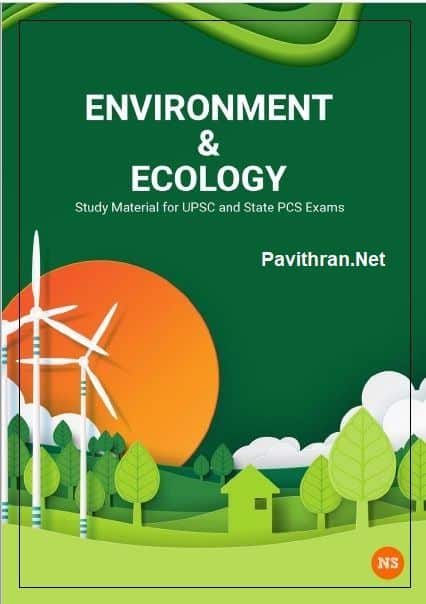Important Branches of Biology
Biology and Its Branches
✸ Agronomy – Management of farms and cultivation of field crops
✸ Agrostology – Study of Grasses
✸ Anthology – Collection of Flowers
✸ Anatomy – Study of internal structures of body
✸ Aquaculture – Study of Fisheries
✸ Bacteriology – Study of Bacteria
✸ Biophysics – Physical aspects of living systems
✸ Biochemistry – Study of chemicals constituting the body and chemical reactions
✸ Biotechnology – Utilization of living organisms or of substances obtained from them in industrial processes
✸ Cell Biology – Structure, Function, Reproduction and life history of cells
✸ Ctetology – Study of acquired characters of organisms
✸ Craniology – Study of Skulls
✸ Cytology – Detailed Structure of Cells
✸ Cytogenetics – Cytological basis of inheritance
✸ Cardiology – Study of heart and its functioning
✸ Dendrology – Study of shrubs and trees
✸ Ecology – Study of reciprocal relationships between organisms and their environment
✸ Endochrinology – Study of duct-less glands and their hormones
✸ Ethology – Study of behaviour of animals
✸ Entomology – Study of life-history of insect pests
✸ Eugenics – Study of science dealing with factors which improve succesive generations of human race
✸ Euthenics – The science that deals with improvement of the future of humanity by changing the environment
✸ Euphenics – Study of production of satisfactory phenotype by means other than Eugenes
✸ Enzymology – Study of enzymes and their activities
✸ Embryology – Study of development of embryo and its growth repair
✸ Floriculture – Cultivation of flower – yielding plants
✸ Genetics – Study of Heredity and Variations
✸ Genetic Engineering – Genetic manipulation to produce an organism with new combination of properties
✸ Haematology – Study of blood and disease caused by it
✸ Helminthology – Study of parasitic worms
✸ Herpatology – Study of reptiles
✸ Immunology – Study of natural or acquired resistance to specific diseases
✸ Ichthyology – Study of fish and its culture
✸ Karyology – Study of Nucleus
✸ Kinesiology – Study of muscle movements
✸ Limnology – Study of Snails
✸ Morphology – Study of form and structure
✸ Myology – Study of muscles
✸ Microbiology – Study of micro-organisms like bacteria and viruses
✸ Molecular Biology – Study of chemicals of living at molecular level
✸ Mammalogy – Study of mammals
✸ Malacology – Study of molluscs and their shells
✸ Myrmecology – Study of Ants
✸ Neonatalogy – Study of new borns upto the age of two months
✸ Neurology – Study of neurons and nerve things
✸ Nosology – Classification of diseases
✸ Osteology – Study of skeletal system
✸ Odonotology – Study of teeth
✸ Organology – Study of different organs
✸ Ontogeny – Study of various life-cycles
✸ Ornithology – Study of Birds
✸ Ophiology – Study of Snakes
✸ Olericulture – Study of cultivation of vegetables
✸ Oncology – Study of tumors
✸ Physiology – Study of process and function associated with life
✸ Phylogeny – Evolutionary relationship among different groups of organisms
✸ Palaeontology – Study of Fossils
✸ Parasitology – Study of parasites
✸ Protozeology – Study of protozoa
✸ Pedology – Study of different types of soil
✸ Pomology – Study of Fruits
✸ Psychobiology – Study of behavioural aspects of animals
✸ Phytogeography – Study of plant distribution on earth
✸ Paleobotany – Study of distribution and characteristics of fossils
✸ Radiology – Study of effects of radiation on living beings
✸ Sarcology – Study of muscles
✸ Syndesmology – Study of bone joints and ligaments
✸ Serology – Study of blood serum
✸ Silviculture – Study of Cultivation of timber-yielding plants
✸ Tectology – Study of structural organisation of body
✸ Trophology – Study of nutrition science
✸ Toxicology – Study of poisons, including their nature and detection and method of treatment
✸ Taxonomy – Study of nomenclature and classification of organisms
✸ Urology – Study of Urine and its diseases
✸ Virology – Study of Viruses
✸ Zoophytology – Study of drifting-organisms such as,diatoms
Useful Books for Competitive Exams
Best Books for Competitive Exams [PDF]
Disclaimer: Pavithran.Net doesn’t aim to promote or condone piracy in any way. We do not own any of these books. We neither create nor scan this Book. The Images, Books & other Contents are copyrighted to their respective owners. We are providing PDFs of Books that are already available on the Internet, Websites, and Social Media like Facebook, Telegram, Whatsapp, etc. We highly encourage visitors to Buy the Original content from their Official Sites. If any way it violates the law or if anybody has Copyright issues/ having discrepancies over this post, Please Take our Contact Us page to get in touch with us. We will reply as soon as we receive your Mails.
We Need Your Support. Please Share the Link if it is helpful to your Cherished circle







![80 Topicwise 2010 - 2025 SSC Mathematics, English, Reasoning & General Awareness Combo (set of 4 Books) Solved Papers - Disha [2025 Edition]](https://www.pavithran.net/wp-content/uploads/2025/02/80-Topicwise-2010-2025-SSC-Mathematics-English-Reasoning-General-Awareness-Combo-set-of-4-Books-Solved-Papers-Disha-2025-Edition-803x1024.webp)
All the types of Biology and Biologists – From the beginning to …